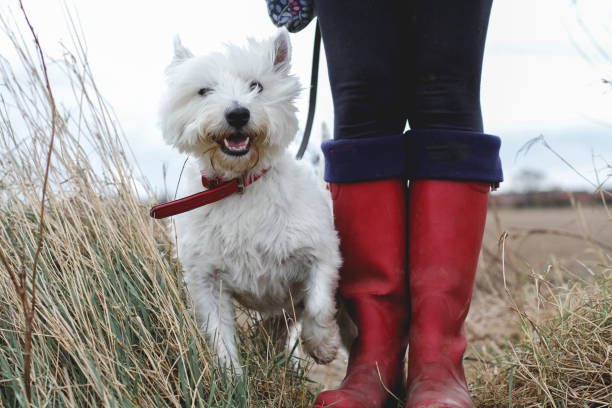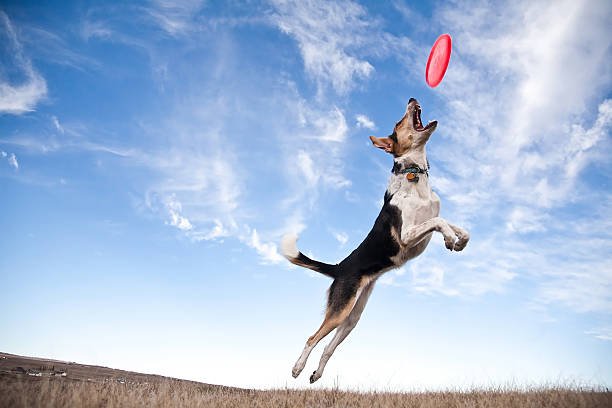
Man’s Best Friend – 7 Benefits of Raising a Dog
Do you have a pet? Many people like to keep pets for companionship, among which dogs account for the main proportion. In 2023, 53% of UK adults own a pet, (increased from 51% in February 2020) with 29% owning a dog, 24% a cat and 2% a rabbit. This is a higher proportion for dogs compared to February 2020, when 26% of UK adults owned a dog. Keeping a dog is not only like having an extra family member, but it is also very beneficial to people’s body and mind. Dogs are indeed mankind’s best friends. In addition to walking your dog, you can also exercise with them. When you want to exercise, you might as well join in with your dog!
Keeping a dog has many physical and mental benefits
Keeping a dog is not only an additional companion pet, but also has many benefits for people’s body and mind, which are listed below:
- Reduce stress:
Spending a few minutes with a dog can reduce blood pressure and anxiety. When people are engaged in stressful work, they will perform better if they have a dog with them. - Reduce depression and be happier:
Dog owners are generally less depressed. The interaction between the owner and the dog, as well as the love received from the dog, can help make the owner’s thoughts more positive, even if he just looks at the dog a little. The brain produces chemicals that make people feel intimate, such as oxytocin. - Make the body healthier:
Research points out that dog owners are more motivated to complete their health plans, because when owners walk their dogs, they themselves are exercising, and the quality of the exercise is better. When a family has a dog, children are more willing to go out to exercise and play with the dog. - Strengthen the mind and social circle:
Research shows that owning and walking dogs can increase social interaction. Dogs can help people gradually become less shy and escape isolation. Many people will talk to other dog owners when walking their dogs. Hence increased interaction. In addition, children who often take care of dogs will have improved empathy and self-esteem. Petting and playing with dogs can increase the production of serotonin and dopamine. - Prevent chronic diseases:
Experts point out that dog walkers are 1/3 more likely to suffer from diabetes than people who do not own a dog; in addition, owning a dog can also help children prevent autoimmune diseases or allergies. Research from the University of Cincinnati College in the United States points out that children with a family history of allergies who grow up with dogs after birth are less likely to develop eczema and asthma. - Enhance cardiovascular health:
Studies have shown that owning a dog is associated with lower heart rate, blood pressure, cholesterol (Cholesterol), and triglyceride (Triglyceride), which can contribute to overall cardiovascular health and reduce the risk of coronary artery disease and heart disease. disease risk. - Find diseases and accompany patients:
Some dogs are trained to sniff out diseases such as skin, kidney, bladder, and prostate cancer, while others are used to accompany patients such as brain trauma, autism, rheumatism, etc. Rheumatoid arthritis and other patients; in addition, some dogs accompany patients with Alzheimer’s disease and seem to be helpful in easing their rage and aggressive behavior.

Training a dog to walk
Although raising a dog is a good thing, it is also a huge responsibility. You have to take care of their daily life, handle their toilets, bathe them, and take them to play. It is also important to train them to be good, just like teaching children.
5 benefits of dog training:
- The process of training a dog can also enhance the relationship between the dog and its owner.
- After the dog and its owner have a common language, they can understand the owner’s instructions.
- In the process of dog training, the mind will also be trained.
- If your dog is well-behaved, you don’t need to worry about them running around or peeing anywhere.
- After dogs are trained, you can take them to meet more people or their own kind.
4 basic commands or actions
You don’t need to train them to be very powerful, just let them understand some basic commands:
- Sit down:
Stand in front of the dog with the food in your hand, put the food close to its nose and let it smell it, then slightly raise the hand holding the food, so that the dog can raise its head in the direction of the food, and at the same time let the dog sit down. , wait for it to sit down, shout “Sit down”, and then give it food. - Come over:
Put on the leash and collar for the dog, hold the leash and keep a short distance from the dog, then squat down to the same height as the dog, shout to it “come here”, and at the same time gently pull the leash and wait for it to come over. Give it more food. - Wait a minute:
Before teaching this command, let the dog learn command 1 first. After asking the dog to sit down as described in Instruction 1, open the palms of your hands and face the dog with the palms of both hands at the same time. Say “Wait a minute”, then walk a few steps back. If it does not move, give it food, and then slowly Slowly increase the distance you retreat. - Leave:
Holding the same kind of food in each hand, extend one of your hands towards it, but do not let it see the food, and then shout “leave”. No matter if it wants to smell, lick, scratch or bark, ignore it and wait until Once it stops trying to get the food in your hand, give it the food in the other hand. Then continue to repeat the same steps and instructions until it really ignores your outstretched hand when you shout “leave”.
Exercise with dogs
Keeping a dog is not only beneficial to humans, but it is also an excellent partner for people when exercising. You can try to engage in the following sports with your dog:
- Dog walking:
This is great exercise for both dogs and people. People who walk their dogs have a lower body mass index (BMI) and are less likely to suffer from chronic diseases or symptoms of depression. - Running:
When you jog with your dog for the first time, slow down and evaluate how far it can run. Then slowly increase the distance. Dogs usually like to run in front of their owners. If they are parallel to their owners or lagging behind, it means it is time to let the dog go. The dog rested. - Climbing stairs:
By climbing stairs with your dog, the owner can train the quadriceps, hamstrings and gluteal muscles, and the lower body will be tighter. - Yoga:
Doing yoga with dogs, there is a term called Doga (Dog+Yoga). The owner can help the dog do some postures, or help it with massage and acupressure, which can enhance the relationship between the human and the dog. At the same time, it can also help the dog do it. Do some health checks and feel for lumps or foreign objects under its fur. - Football:
Some types of dogs like to play football. Buy a bite-proof football. After your dog learns to kick or dribble the ball with its nose or paws, you can then play other games, such as kicking the ball far away and letting the dog chase the ball. - Throw a Frisbee:
Play a Frisbee game with your dog. You can use the Frisbee as a eating plate to make it more familiar with the Frisbee, or put the Frisbee on the ground to spin or roll to make the dog more involved in the Frisbee game.













